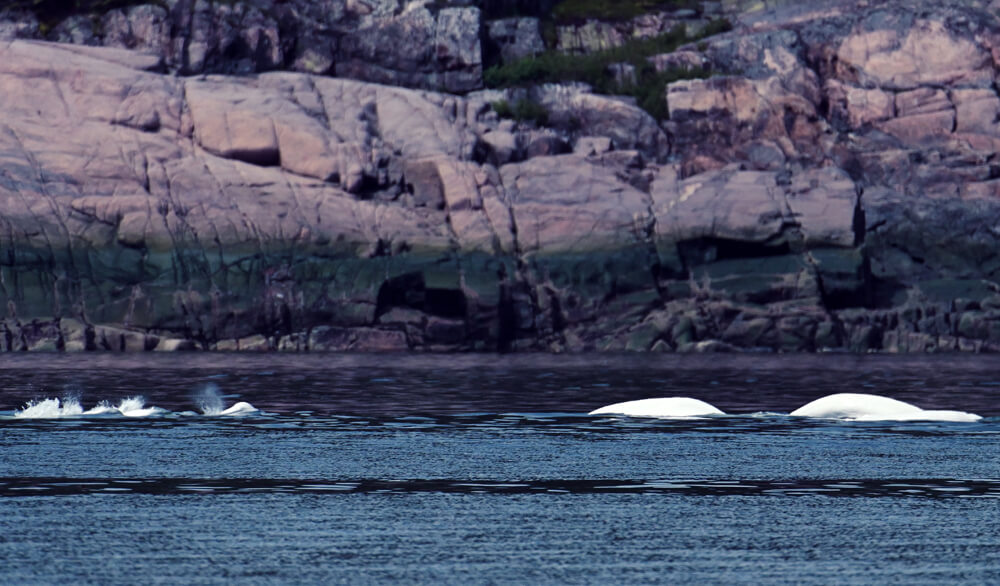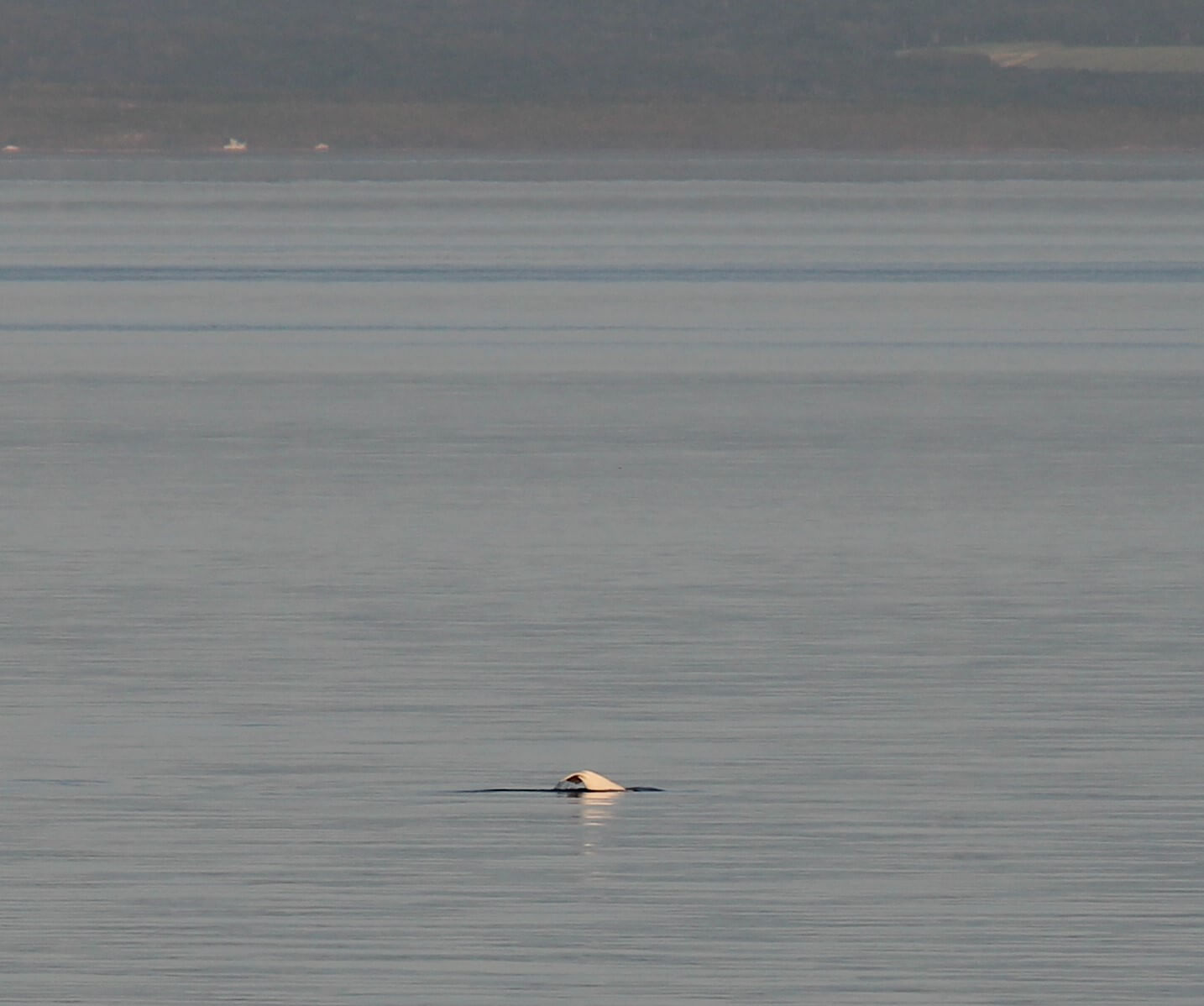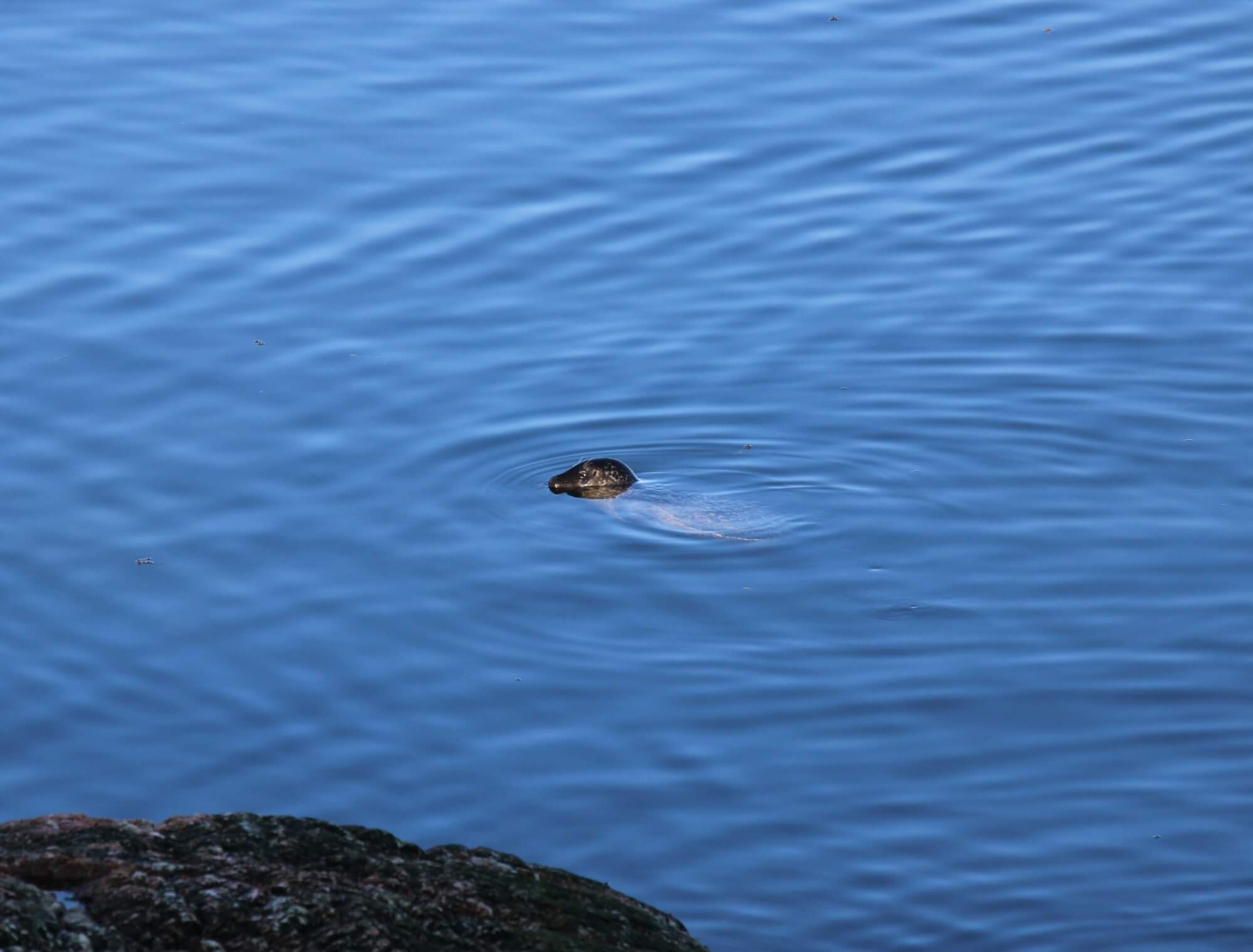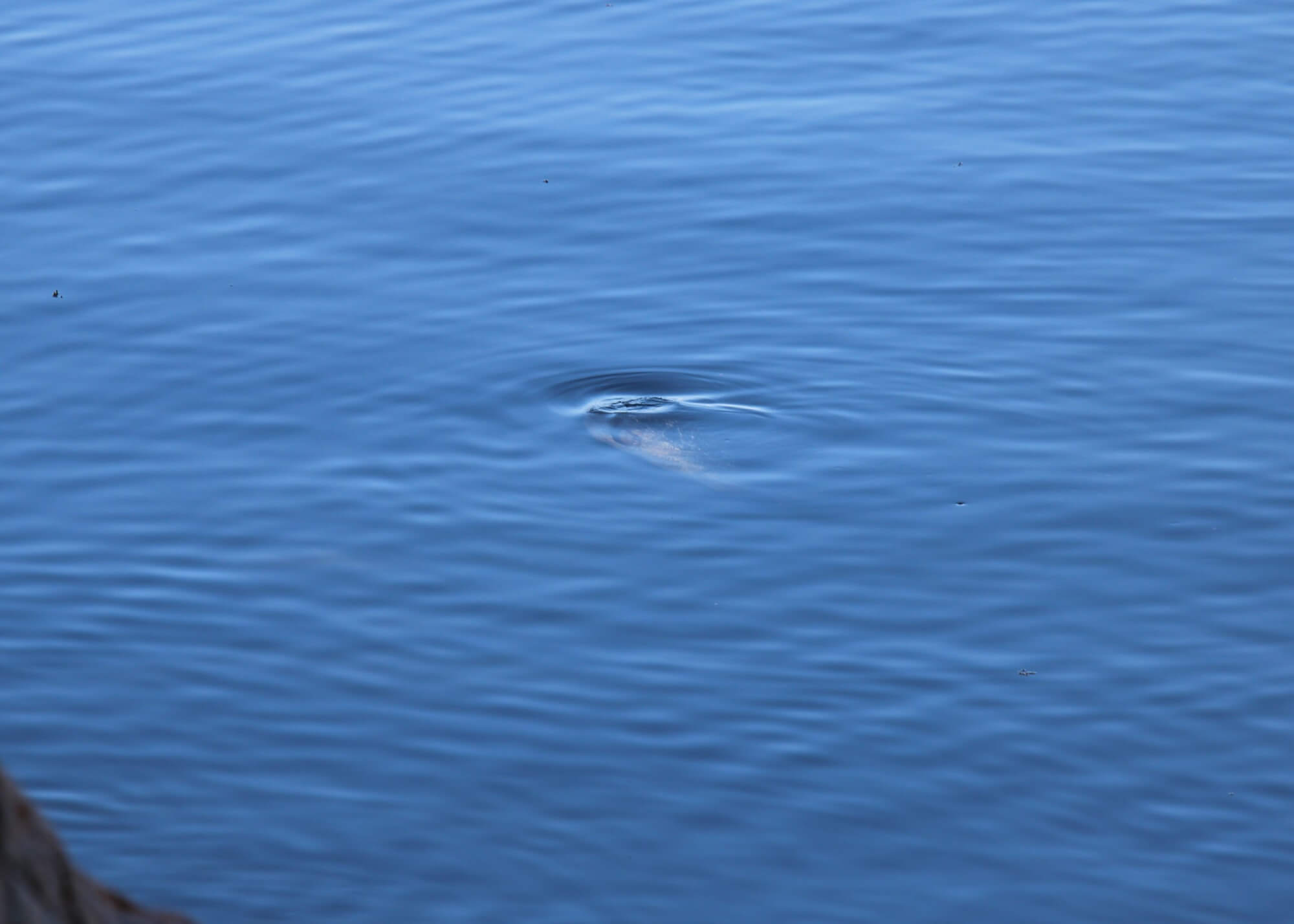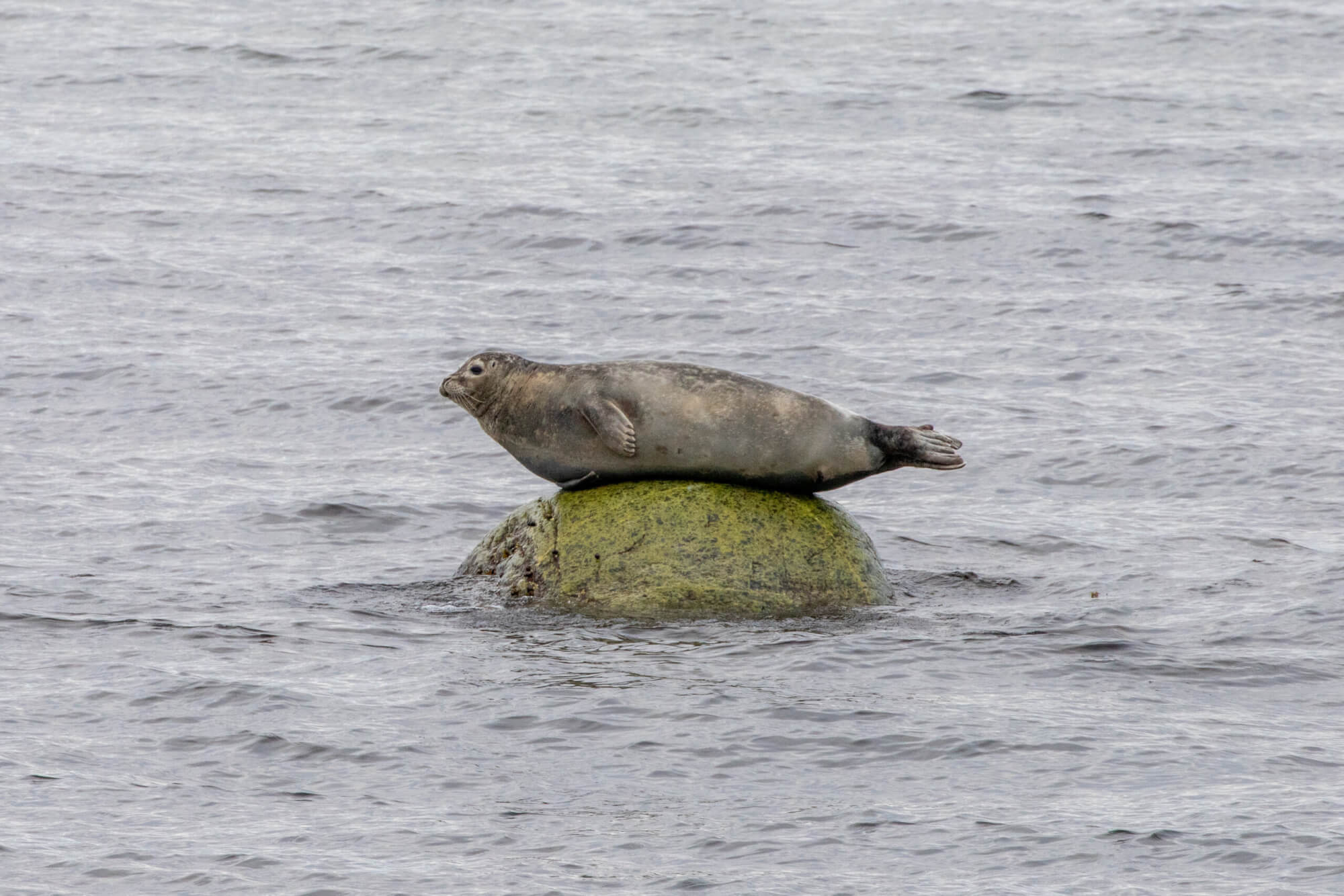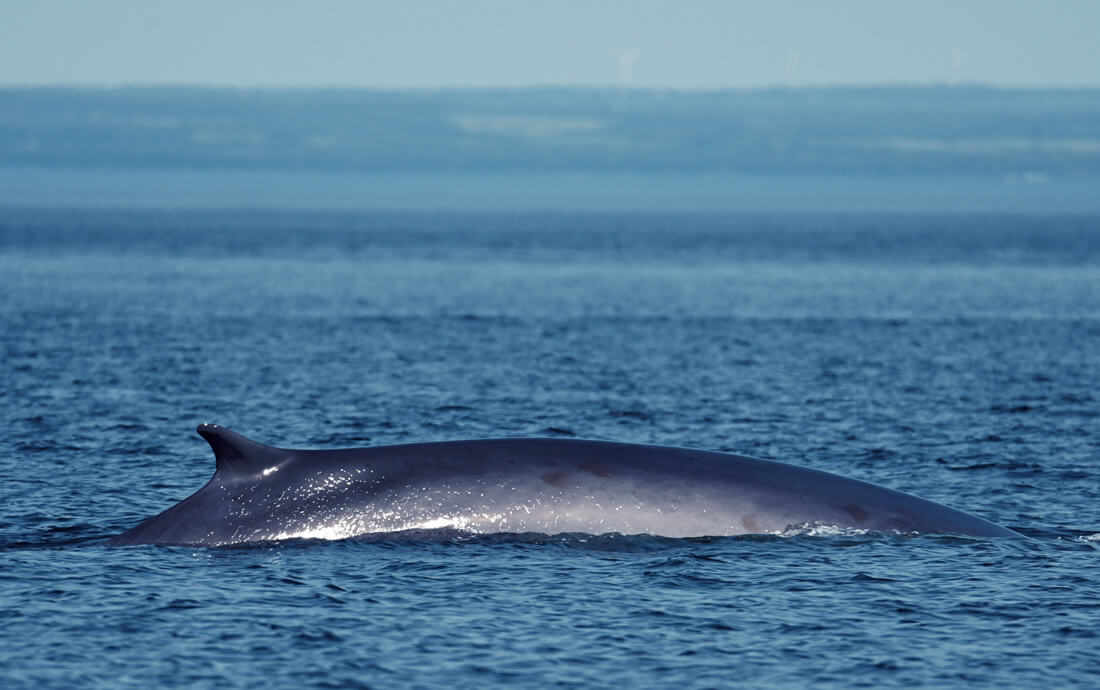The weekly sightings column is not only a bit of a summary of everything that has been seen in the St. Lawrence over the past week, but also stories of encounters with marine mammals. The publication is appreciated as much by longtime marine mammal enthusiasts and those who have just enjoyed their very first observation of a sparkling back of a beluga. This week, let’s dive headfirst into the stories of these always interesting sightings.
An unexpected encounter
At Parc national du Bic, a wildlife photographer is surprised by the presence of feeding minke whales at sunset. “Yesterday, ten minutes from my house, at a place I visit a good hundred times a year, I was able to observe two minke whales feeding just a few dozen metres from shore. It was awesome!” Indeed, this species is recognized for its spectacular surface behaviour. It feeds on small schooling fish and planktonic crustaceans during its ascents. The wildlife enthusiast also shares his thoughts: “It’s important to understand that the Rimouski sector is not necessarily known for whale watching, unlike the North Shore, where the water is deeper and richer than on the south side. Observing whales so close to shore at Le Bic does occur, albeit relatively rarely. Watching them lunge into a buffet of capelin for a good hour was riveting!”
Magical moments
On the other side of the river, a whale lover is also treated to some exciting sunset observations. In Les Bergeronnes, the weekend was a memorable one: “A fin whale at sunset, good numbers of harbour porpoises, a harbour seal so close you could see it through the clear water, belugas at sunset and at sunrise. At dawn, it was groups of females with their young. One individual in particular provided good looks at its caudal fin when it dove.” During the night, it was the sound of pinnipeds that woke the naturalist at her campsite. “During the night, a group of grey seals (I think) passed very close; I say grey seals because they are known to hang out in groups in summer. Their breathing was clearly audible and judging by what we could hear, there may have been nearly a dozen of them.”
The second largest fish in the world!
Harbour seals were also seen in a few places on the south shore, including one basking quietly on a rock in Grande-Vallée. In the Gaspé Bay sector, several minke and humpback whales have been observed. “Every time we go out on the water, we see between one and seven humpbacks,” explains a cruise captain. We also observed a fin whale, but still no sign of any blues. The second largest fish in the world, the basking shark, was also reported near Cap Gaspé. Reaching nearly 12 metres long, this giant roams the St. Lawrence between June and September. Despite its size and the fearsome reputation of sharks, this one is as harmless as a whale. Like whales, it feeds on plankton and tiny crustaceans , which it ingests by swimming with its mouth open and filtering the water.
Large rorquals on the north shore
Up and down the coast, sightings are pouring in. In Blanc-Sablon, the presence of several humpbacks signals the start of the season. On Friday, June 16, between eight and ten individuals were spotted from the Bella Desgagnés. In Havre-Saint-Pierre, despite making several outings on the water, one observer was only able to detect grey seals and harbour porpoises. In Longue-Pointe-Mingan, a fin whale and two minke whales were reported. In the Sept-Îles area, two humpbacks, a fin whale and three minke whales were present. Farther upstream, in Franquelin, foraging minke whales make an impression on those who take the time to stop and admire them. A dozen or so porpoises were also cruising the area.
In Tadoussac, the return of Tic Tac Toe, a humpback whale first seen back in early May, was enthusiastically welcomed by Tadoussac residents. A fin whale is also present in the area, and was seen on several consecutive days over the past week. In the mouth of the Saguenay, the first beluga calf of the year was observed. Nursing scenes between the mother and her offspring were also witnessed!
A wildlife videographer captured some very interesting footage of a harbour seal gulping down its prey:
Where are the whales this week? Observations map
These infomations were reported by our network of observers. They give an idea of the presence of whales and in no way represent the actual distribution of whales in the St. Lawrence river. Simply use it for fun!
Click on the whale or seal icons to discover the species, the number of individuals, additional information or photos of the sighting. To enlarge the map, click on the icon in the top right-hand corner. The map works well on Chrome and Firefox, but not so well on Safari.
To display the list of sightings, click on the icon in the top left-hand corner.


